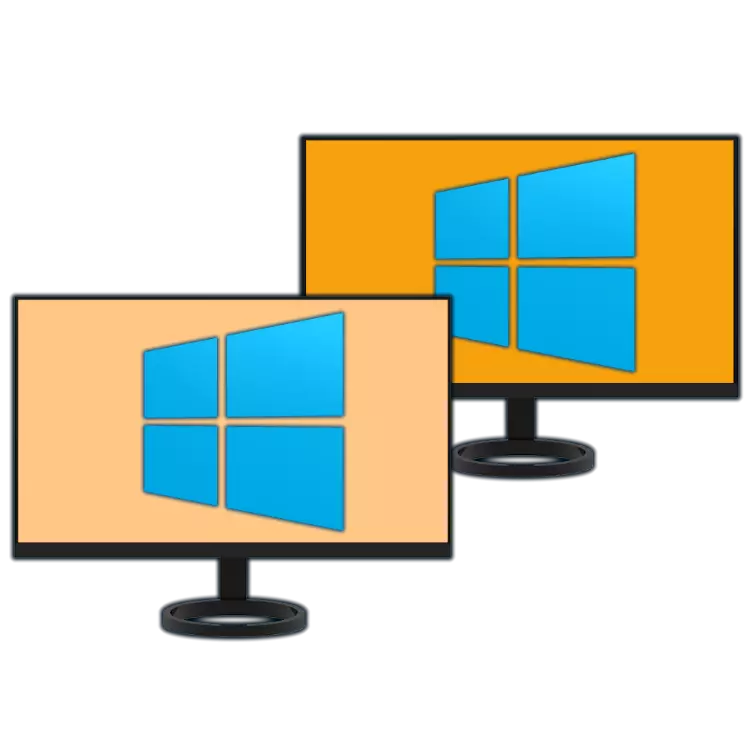
Despite the high resolution and large diagonal of modern monitors, to solve many tasks, especially if they relate to work with multimedia content, an additional workspace may be required - the second screen. If you want to connect to your computer or a laptop running Windows 10, one more monitor, but do not know how to do it, just get out of our today's article.
Note: Note that later it will be about the physical connection of the equipment and its subsequent configuration. If under the phrase "Make two screens", which led you here, you mean two (virtual) desktops, we recommend familiar with the following article below.
Step 4: Setup
After the correct and successful connection of the second monitor to the computer, we will need to perform a number of manipulations in the "parameters" of Windows 10. This is necessary, despite the automatic detection of new equipment in the system and the feeling that it is already ready to work.
Note: The "dozen" almost never requires drivers to ensure the correct operation of the monitor. But if you encountered the need to install them (for example, the second display is displayed in "Device Manager" As an unknown equipment, there is no image on it), read the following article below, follow the actions proposed in it, and only then go to the following steps.
Read more: Installing the driver for the monitor
- Go to "Parameters" Windows, using its icon in the Start menu or the Windows + I keys on the keyboard.
- Open the "System" section by clicking on the appropriate section of the left mouse button (LKM).
- You will find yourself in the tab "Display", where you can customize work with two screens and adapt their "behavior" to itself.

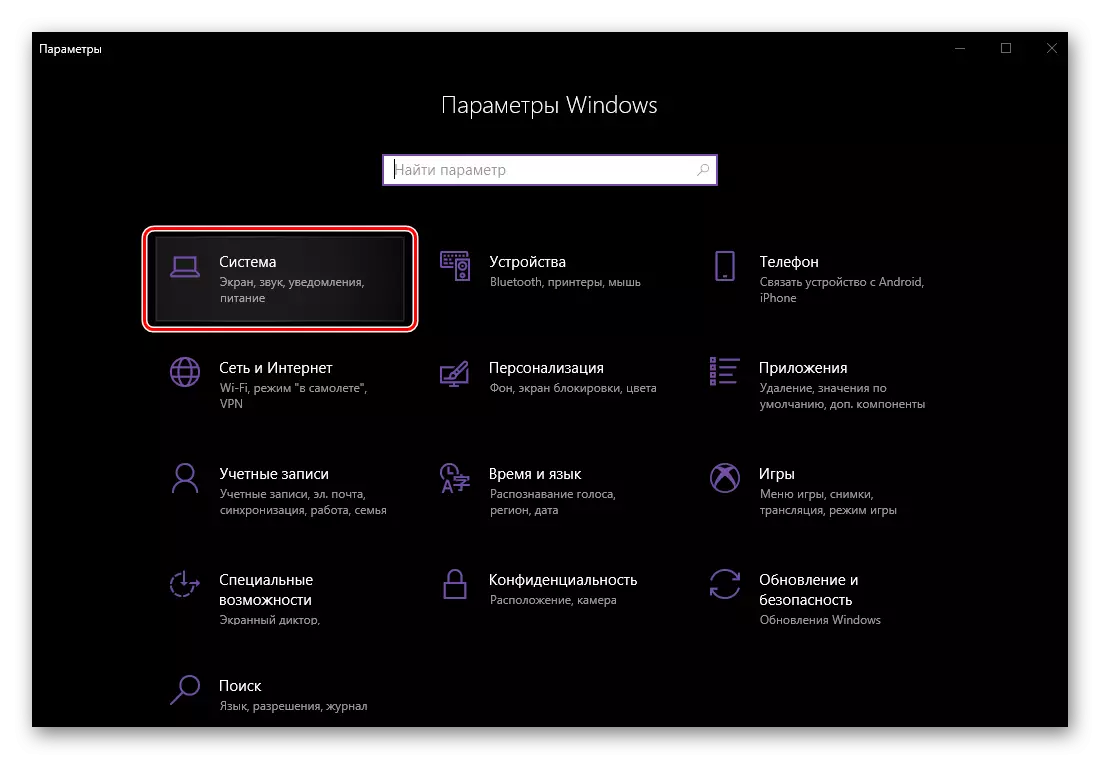
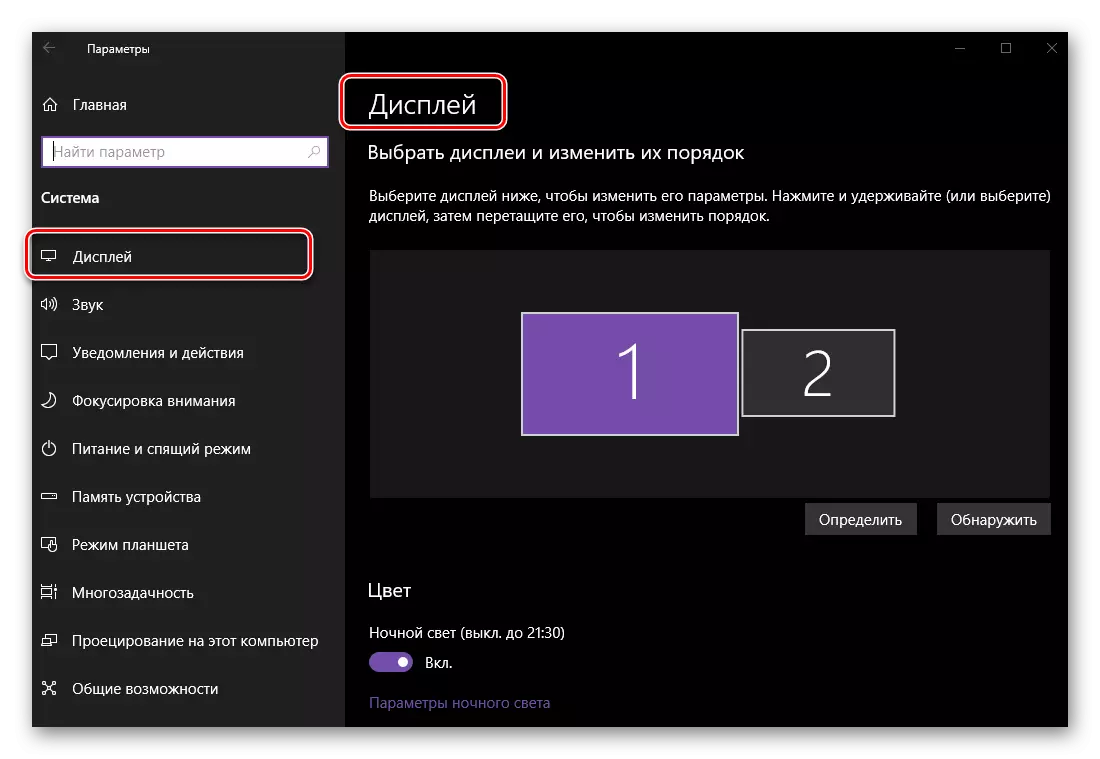
Next, we will consider only those parameters that have a relationship to several in our case two, monitors.
Note: To configure all presented in the section "Display" Options, except location and color, first need to be highlighted in the preview area (thumbnail with the image of screens) a specific monitor, and only then make changes.

- Location. The first thing you can and should be done in the settings is to understand which number it belongs to each of the monitors.

To do this, click the "Determine" button located under the preview area and look at the numbers that are for a while will appear in the lower left corner of each of the screens.
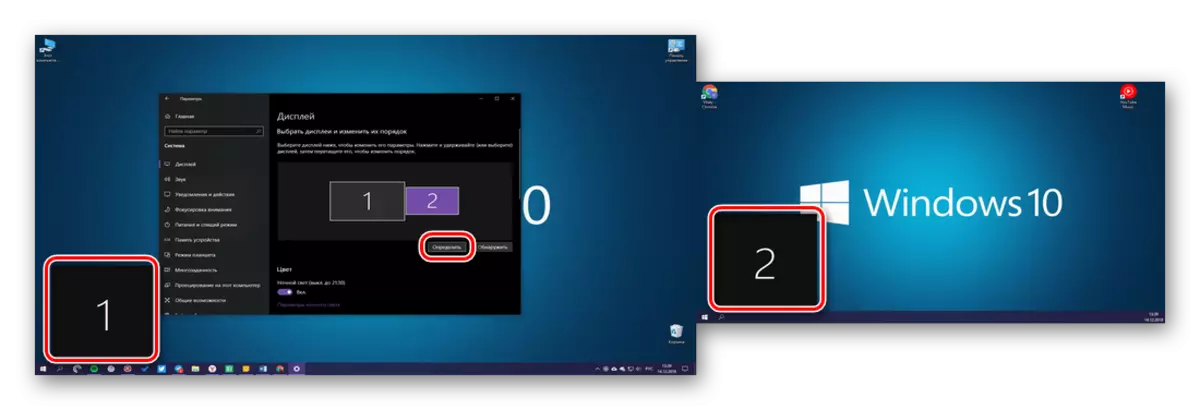
Next, you should specify the real location of the equipment or the one that you will be convenient. It is logical to assume that the display at number 1 is the main, 2 - additional, although on the fact of each of them you have identified yourself at the connection stage. Therefore, just place the thumbnails of the screens presented in the preview window as they are installed on the table or as you consider it necessary, then click on the "Apply" button.
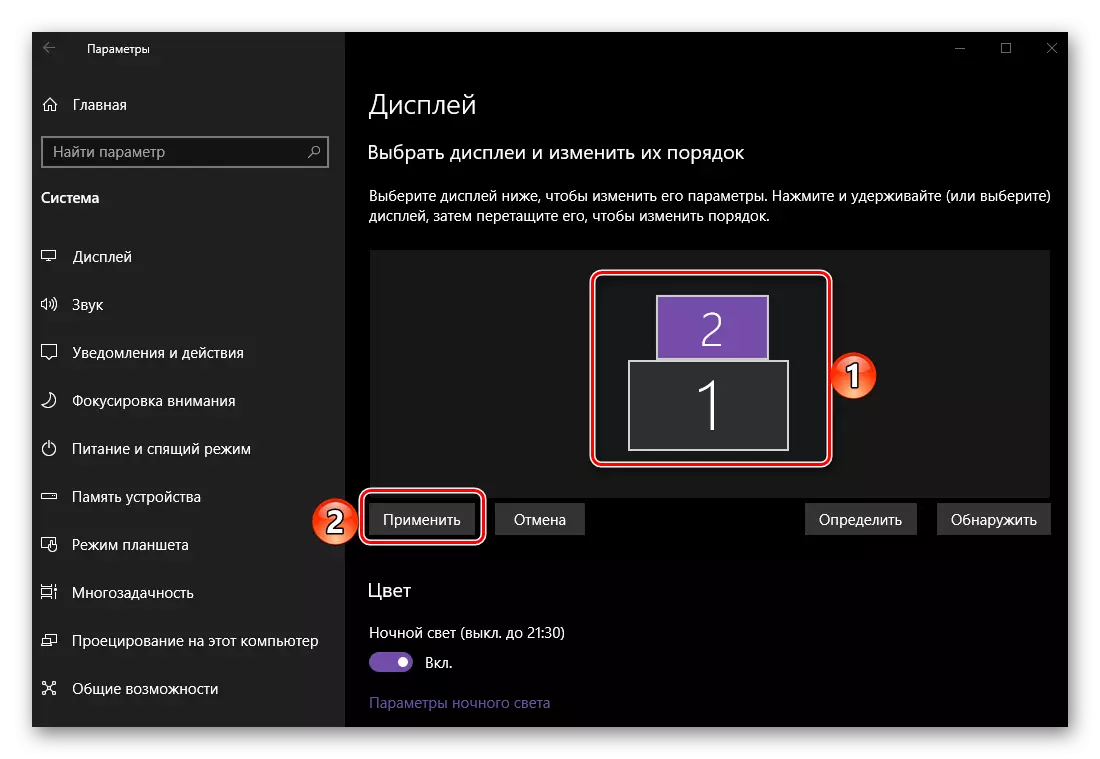
Note: Displays can only be located on each other, even if they are installed at a distance.
For example, if one monitor is directly opposite of you, and the second is to the right of it, you can place them as shown in the screenshot below.

Note: The size of the screens shown in the parameters "Display" , depend on their real permission (not diagonal). In our example, the first monitor is Full HD, the second - HD.
- "Color" and "Night Light". This parameter applies in general to the system, and not to a specific display, earlier we have already considered this topic.
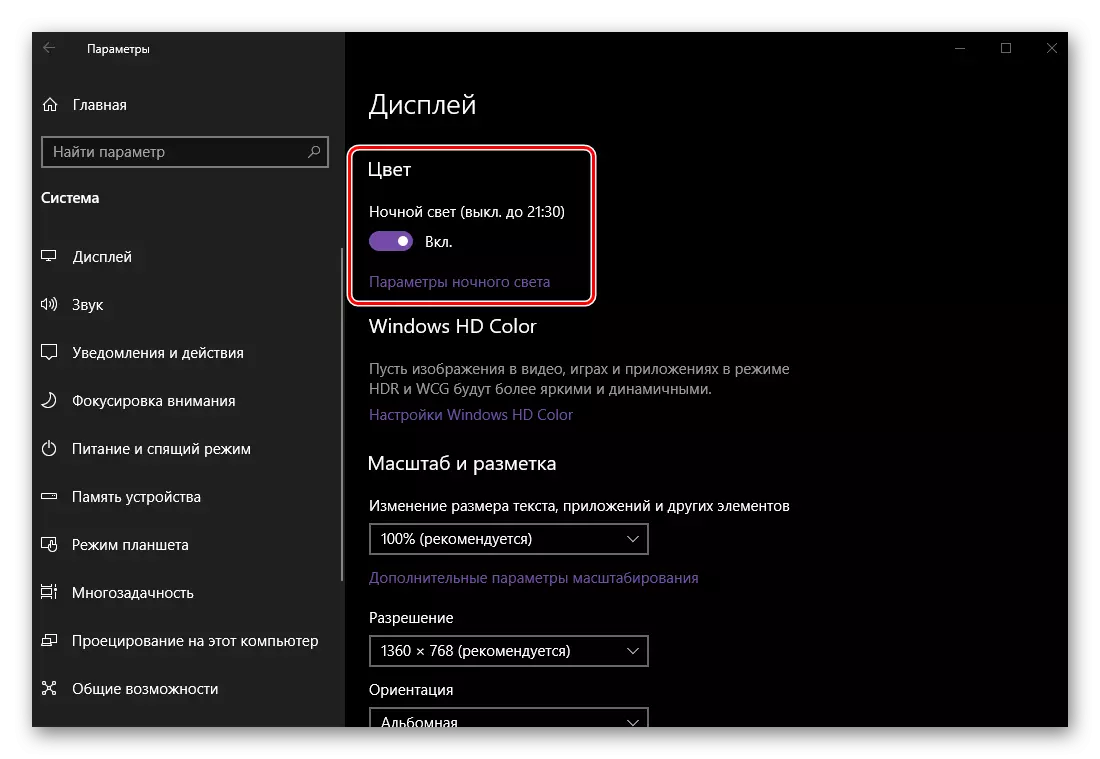
Read more: Enabling and configuring night mode in Windows 10
- "Windows HD Color Settings". This parameter allows you to configure image quality on HDR support monitors. The equipment used in our example is not, therefore it is to show on a real example, as color setting occurs, we do not have the opportunity.
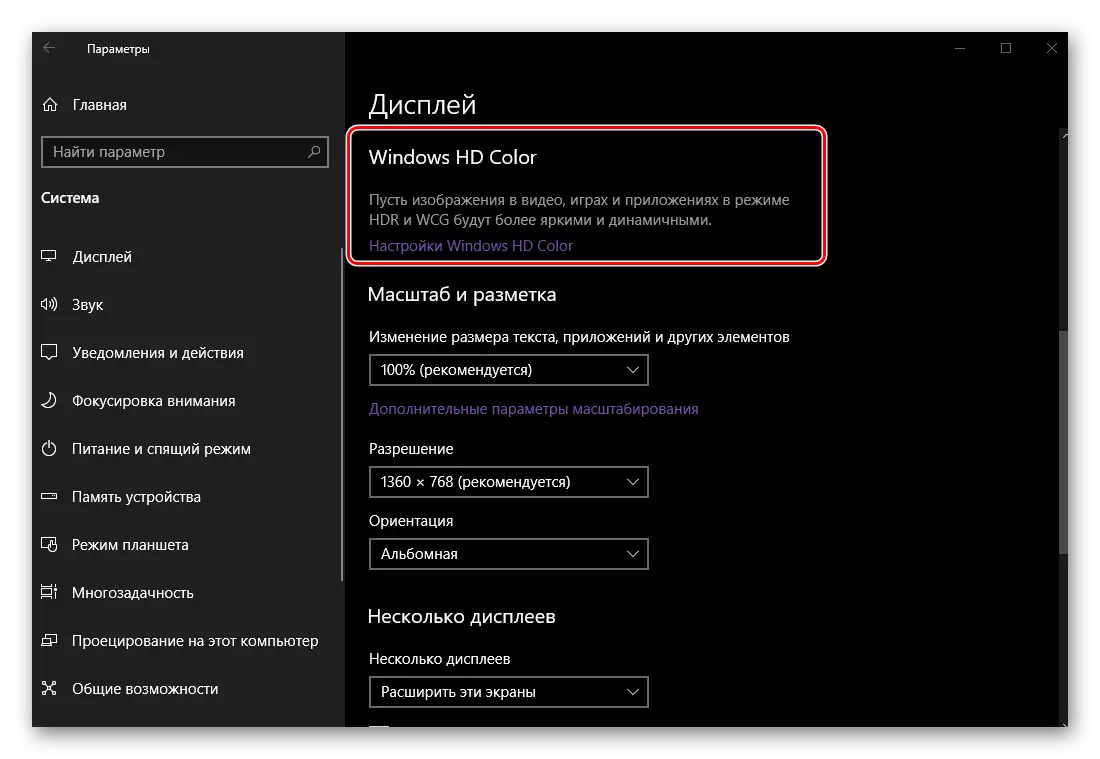
In addition, specifically to the topic of two screens of direct relationship does not have it, but if you wish, you can familiarize yourself with the detailed description of the operation of the function with the Edge of Microsoft, presented in the appropriate section.
- "Scale and markup." This parameter is determined for each of the displays separately, although in most cases its change is not required (if the monitor resolution does not exceed 1920 x 1080).

And yet, if you want to increase or decrease the image on the screen, we recommend reading the following article below.

Read more: Change Screen Scale in Windows 10
- "Resolution" and "Orientation". As in the case of scaling, these parameters are configured separately for each of the displays.

Resolution is better left unchanged by preferring the default value.

To change the orientation with the "landscape" to the "book" follows only if one of the monitors are not installed horizontally, but vertically. In addition, the "inverted" value is available for each option, that is, reflection horizontally or vertical, respectively.

See also: Changing the screen resolution in Windows 10
- "Several displays." This is the main parameter when working with two screens, as it allows you to determine how you interact with them.

Select whether you want to expand displays, that is, to make a second continuation of the first (for this and it was necessary to position them correctly at the very first step from this part of the article), or, on the other hand, you wish to duplicate the image - to see on each of the monitors the same thing .

Additionally: If the way the system has determined the main and additional display does not match your desire, select the one of them in the preview area, which you consider the main thing, and then install the checkbox opposite item "Make the Basic Display" item.
- "Advanced display parameters" and "graphics settings", as well as the previously mentioned parameters "Colors" and "Night Light", we will miss - this refers to the schedule as a whole, and not specifically to the topic of our today's article.
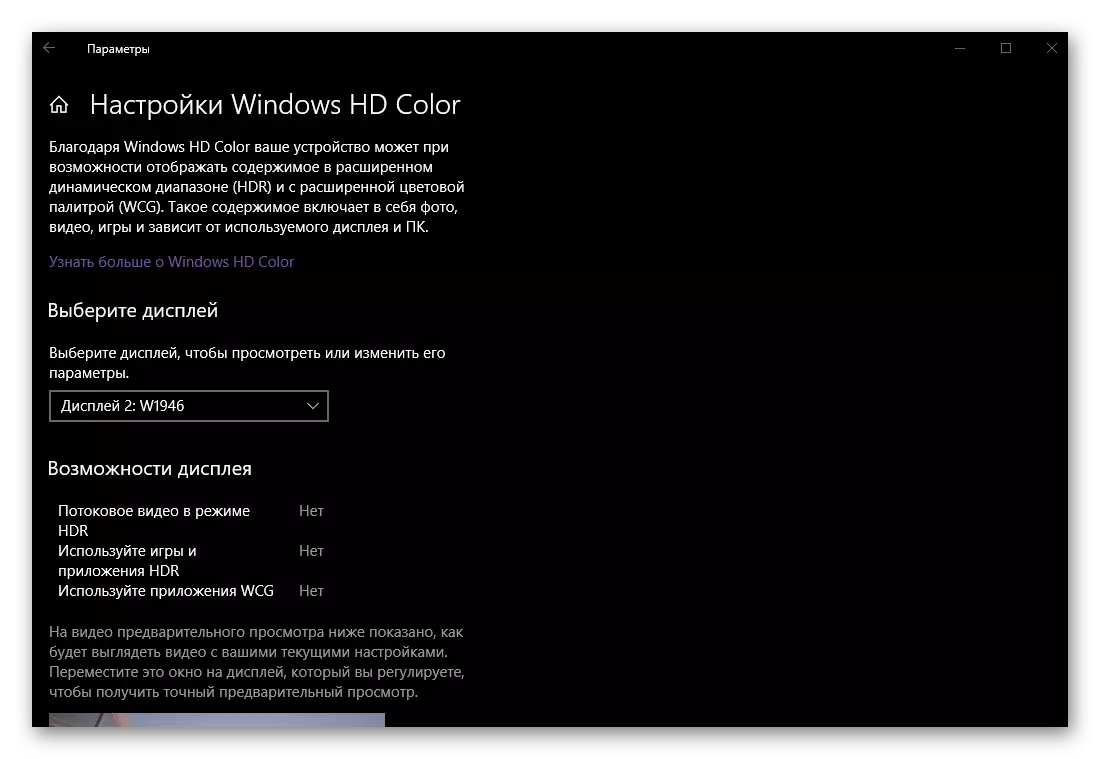
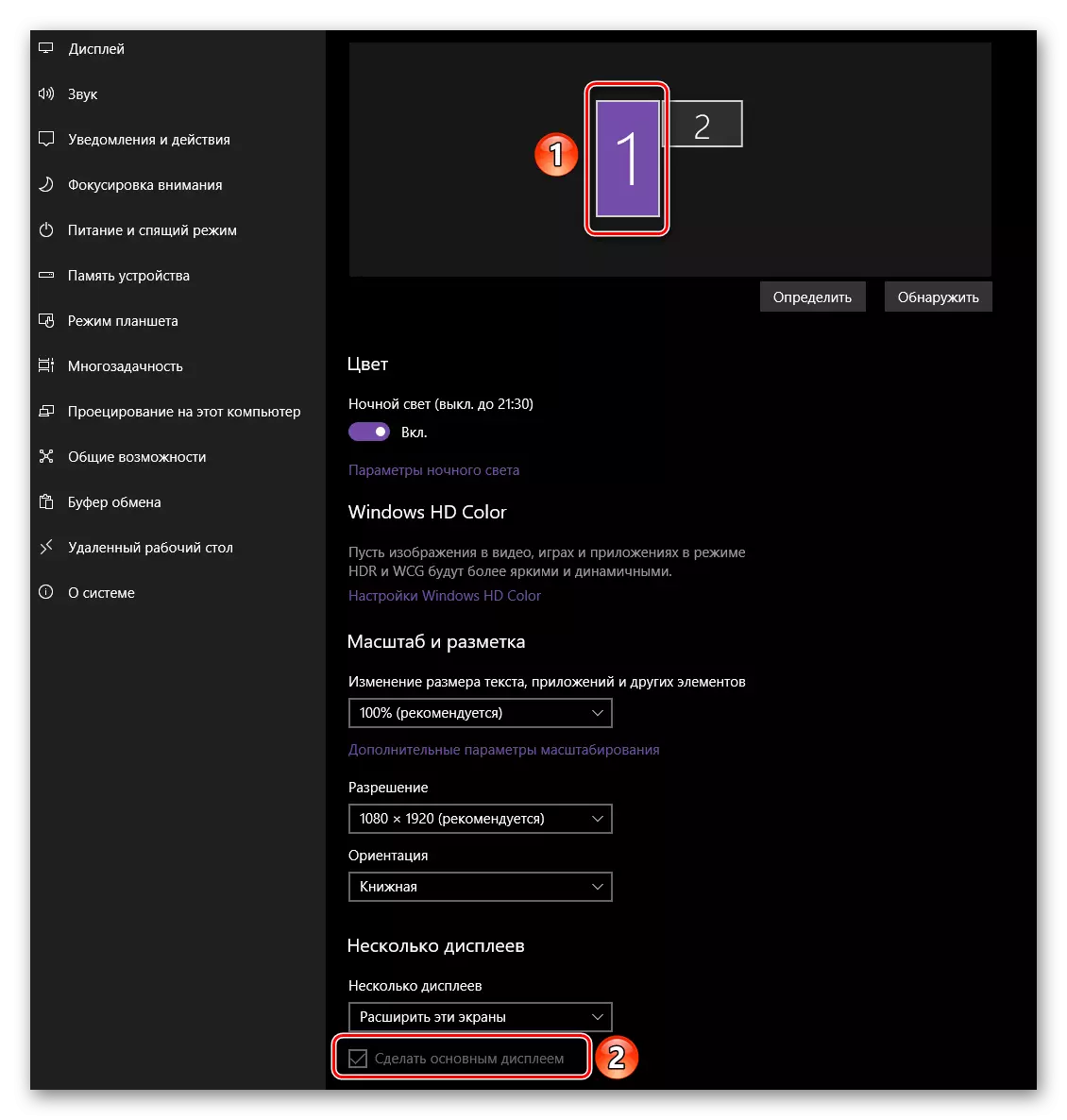

In the setting of two screens, or rather, the image transmitted, there is nothing complicated. The main thing is not only to take into account the technical characteristics, diagonal, resolution and position on the table of each of the monitors, but also to act, for the most part, at your personal discretion, sometimes trying different options from the list available. In any case, even if you are mistaken on some of the stages, everything can be changed in the "Display" section in the "parameters" of the operating system.
Optional: Fast switching between display modes
If when working with two displays you have often to switch between display modes, it is not necessary to access the "Parameters" section of the operating system considered above. This can be done much faster and simple way.

Click on the keyboard "Win + P" key and select the appropriate mode from four available in the "Project" menu.
- Only the computer screen (main monitor);
- Repeating (image duplication);
- Expand (continued pictures on the second display);
- Only the second screen (disabling the main monitor with the translating image to the additional).
Immediately for selecting the required value, you can use both the mouse and the above-mentioned key combination - "Win + P". One press is one step in the list.
READ ALSO: Connecting an external monitor to a laptop
Conclusion
Now you know how to connect an additional monitor to a computer or laptop, and then ensure its work, adapting to your needs and / or needs the parameters of the image transmitted to the screen. We hope this material was useful for you, we will finish this.
